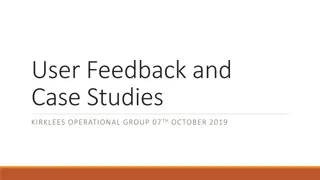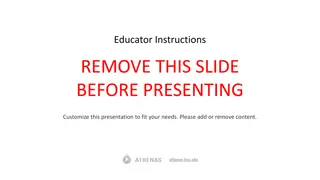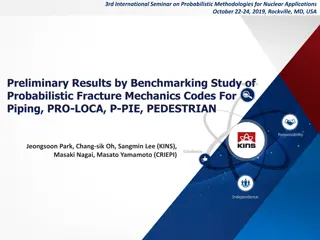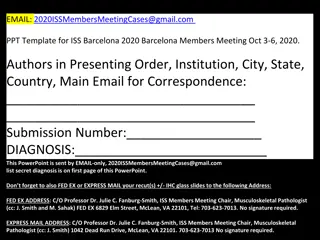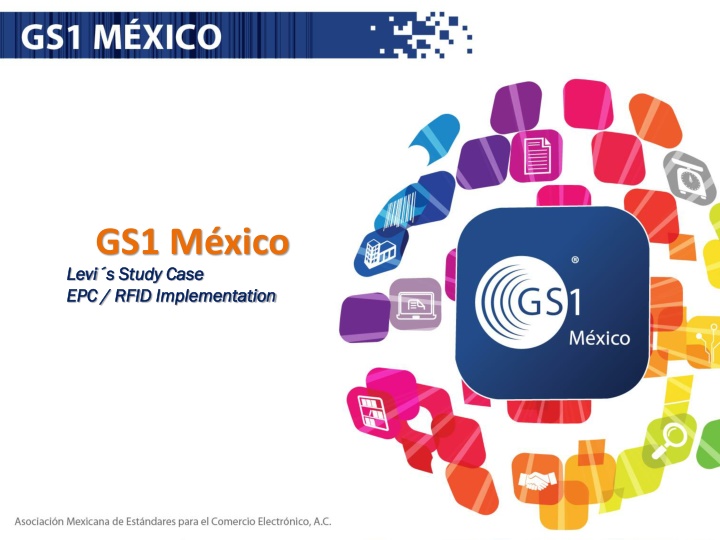
Levi's RFID Implementation Case Study
Explore how Levi, a multinational manufacturer of jeans, implemented RFID technology to improve inventory management and address issues like discrepancies, lack of information, and financial supply challenges. Discover the company's business needs, scope of the pilot project, and the benefits achieved through RFID implementation.
Download Presentation

Please find below an Image/Link to download the presentation.
The content on the website is provided AS IS for your information and personal use only. It may not be sold, licensed, or shared on other websites without obtaining consent from the author. If you encounter any issues during the download, it is possible that the publisher has removed the file from their server.
You are allowed to download the files provided on this website for personal or commercial use, subject to the condition that they are used lawfully. All files are the property of their respective owners.
The content on the website is provided AS IS for your information and personal use only. It may not be sold, licensed, or shared on other websites without obtaining consent from the author.
E N D
Presentation Transcript
GS1 Mxico Levi Levi s Study Case s Study Case EPC / RFID EPC / RFID Implementation Implementation
Agenda 1. Levi 1. Levi s s 1.1 1.1 Company Company Profile Profile 2. Business 2. Business Need Need 2.1 Background 2.1 Background 2.2 Issues Identification 2.2 Issues Identification 3. Scope / Pilot 3. Scope / Pilot 3.1 Origin 3.1 Origin 3.2 Scope 3.2 Scope 3.3 Timeline 3.3 Timeline 4. Solution 4. Solution 4.1 Implementation of EPC / RFID 4.1 Implementation of EPC / RFID 4.2 Benefits 4.2 Benefits
1. Levi 1. Levi s s
1.1 Company Profile Multinational Multinational manufacturer known known as as the the inventor inventor of of the first first pair pair of of jeans jeans. . manufacturer the They They have Dockers Dockers and have 2 2 sub and Denizen Denizen. . sub- -brands brands: : Levi Levi s s 5 5, ,000 000 employers employers in in over 110 110 countries countries. . employees employees up up to to over
2. Business 2. Business Need Need
2.1 Background We manufacture the merchandise within We manufacture the merchandise within our 50 distribution centers, which turns our 50 distribution centers, which turns the work difficult, and exhausting to keep the work difficult, and exhausting to keep an eye of every single product through the an eye of every single product through the whole supply chain . whole supply chain .
2.2 Issues Found 20% discrepancy between the 20% discrepancy between the physical inventory and the levels physical inventory and the levels reported in system. reported in system. I II. II. I. I. Lack of Lack of Information Information Lack of detail such as color & Lack of detail such as color & sizes. sizes. Inventory Inventory II Inventory supplies in stores of over Inventory supplies in stores of over 4 months. 4 months. III III. III. IV. IV. Financial Financial Supply Supply Sales don Sales don t match the expectations of high inventor expectations of high inventor levels. levels. t match the IV
3. 3. Scope Scope/ /Pilot Pilot
3.1 Origin of the Pilot On On 2005 the the RFID could could pilot results results exceeded 2005, , Levi RFID / / EPC pilot it it. . After exceeded the Levi s s made EPC technology technology into After 6 6 months, months, they the primal primal objectives made up up its its decision decision to to implement into one one store store so they found found out objectives. . implement so they out that that the they the 6 Months 6 Months 2006 2006 2005 2005 s Kick Off 40% reduction 40% reduction in in out of stocks items. items. out of stocks Extended the pilot in 2 more Extended the pilot in 2 more stores. stores. Pilot Pilot s Kick Off
3.2 Scope Financial Financial Operatives Operatives I. Reduce inventory I. Reduce inventory levels to, at most, 2 levels to, at most, 2 months. months. II.Reduce the % of out II.Reduce the % of out- - of of- -stocks items. stocks items. I I. . EPC/RFID EPC/RFID into into the the DC Fully Fully integrate integrate technology technology DC operation operation. . III. Increase sales. III. Increase sales. IV. Accurately manage IV. Accurately manage replenishment replenishment automatically automatically generated with EPC / generated with EPC / RFID tech. RFID tech. II II. . EPC/RFID EPC/RFID technology based based operations operations in in stores stores: : goods goods- -in, returns, returns, and and management management. . Implement Implement technology- - in, sales, sales, exchanges exchanges inventory inventory
4 EPC / RFID 4 EPC / RFID Implementation Implementation
Once it Once it s known that the benefits are out there, s known that the benefits are out there, Levi Levi s decided to gradually integrate the RFID s decided to gradually integrate the RFID solution into the remaining stores. solution into the remaining stores.
First, First, the automatically automatically by stocked stocked. . the Distribution Distribution Center Center receives receives the by the the store, store, asking the PO, just for PO, based based on for what what they on the they really the results results brought really need need to to be brought asking just be Every single pair of Every single pair of jeans, has its own jeans, has its own SRFID! SRFID!
Secondly, Secondly, in in order to to verify verify and Number Number. . order to to validate and scan scan such validate the such things the shipping shipping; ; a a web things like like weight, web portal portal was weight, net net content was previosly previosly created content and and the created the Serial Serial
The The POS merchandise merchandise. . Once the the information information avoing information information matches inventory inventory. . POS receives receives the the Advance Advance Shipping Once the the items items have avoing to to open open the matches automatically automatically with Shipping Notice have arrived, arrived, a a mobile the boxes boxes to to check with the the POS Notice before mobile RFID check out POS data before the the arrival arrival of of the RFID device device validate out what what s s inside data and and updates updates the the validate inside. . The The the
Finally, Finally, as device device to to help Mirror Mirror allowing how how it it would as a a consumer consumer experience help the the customers allowing them them to to pick would fit fit in in it it and experience and customers to to fully pick up and how how it it looks and a a Marketing Marketing strategy fully interact interact with up a a garment garment and looks in in different different colors strategy; ; they with the the store and see see through colors. . they set store. . An through the set up An Intelligent Intelligent the reflection reflection up a a new new
4.1 EPC / RFID Implementation
4.2 Benefits -Increased by 11% Increased by 11% - Improved availability of Improved availability of products. products. -Enhaced consumer buying Enhaced consumer buying experience . experience . -Reduced transport costs, Reduced transport costs, typically qualified as wait typically qualified as wait times . times . -Increased efficiencies in DCs Increased efficiencies in DCs -Optimised logistics Optimised logistics operations, achieved by operations, achieved by distribution to a higher distribution to a higher number of stores per day. number of stores per day. -Reduced inventory in stores Reduced inventory in stores from 4 to a 2 from 4 to a 2- -months supply. months supply. -Improved inventory accuracy Improved inventory accuracy to 99% to 99% -Removal of innactive Removal of innactive products. products. -Provided more complete and Provided more complete and detailed inventory view. detailed inventory view. Sales Sales Store Store Inventory Inventory Financial Financial Benefits Benefits - -Increased efficiency via fulled Increased efficiency via fulled automated replenishment. automated replenishment. -Improved ability to verify the Improved ability to verify the accuracy of work in warehouse. accuracy of work in warehouse. -Increased hours of operation Increased hours of operation and opportunities for more and opportunities for more sales through the elimination of sales through the elimination of store closings for inventory and store closings for inventory and replenishment. replenishment. Replenishme Replenishme nt nt in in Stores Stores Out Out- -Of Of- -Stock Stock - -Reduced lost sales by 40% Reduced lost sales by 40% due to reduction in out due to reduction in out- -of of- - stocks merchandise. stocks merchandise.
Technology as an enabler, on its own, Technology as an enabler, on its own, doesn t really do anything. You must doesn t really do anything. You must effectively integrate RFID into a store s effectively integrate RFID into a store s operations for it to be useful operations for it to be useful Abel Garc a, Director of IT, Levi s Latin America




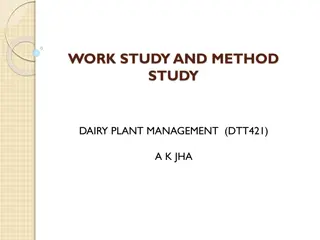
![Comprehensive Case Study on [Insert Case Title Here]](/thumb/159705/comprehensive-case-study-on-insert-case-title-here.jpg)








